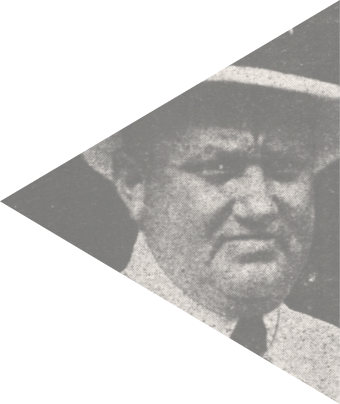




the devastation on Black Tom Island, where German saboteurs destroyed thousands of tons of munitions destined for the Allied Powers, German saboteurs targeted the Kingsland industrial munitions plant. The facility was located in Lyndhurst, New Jersey, eight miles west of Black Tom Island, where 2,000 workers of the Canadian Car and Foundry Company manufactured more than three million artillery shells each month for delivery to Russia. It was part of an $85 million contract ($2.1 billion in 2021 dollars) the company had signed with the Czarist government.

 Security at Kingsland had been bolstered after the Black Tom explosion in July 1916, with a 65-man force of uniformed guards. With interned ship captain and German intelligence operative Frederick Hinsch involved with the planning, the saboteurs managed to secure employment at the plant for several conspirators. On January 11, 1917, a fire started at the workbench of an employee named Theodore Wozniak – a former soldier in the Austro-Hungarian Empire, then allied with Germany – and rapidly spread through the plant. The fire began around four o’clock in the afternoon, sparking a chain reaction of explosions, with an estimated 400,000-500,000 shells still cooking off through the night. The entire plant and its inventory of munitions was destroyed in the fire, causing millions of dollars in damage.
Security at Kingsland had been bolstered after the Black Tom explosion in July 1916, with a 65-man force of uniformed guards. With interned ship captain and German intelligence operative Frederick Hinsch involved with the planning, the saboteurs managed to secure employment at the plant for several conspirators. On January 11, 1917, a fire started at the workbench of an employee named Theodore Wozniak – a former soldier in the Austro-Hungarian Empire, then allied with Germany – and rapidly spread through the plant. The fire began around four o’clock in the afternoon, sparking a chain reaction of explosions, with an estimated 400,000-500,000 shells still cooking off through the night. The entire plant and its inventory of munitions was destroyed in the fire, causing millions of dollars in damage.

There were fortunately no injuries from the fire, and authorities initially reported it as an industrial accident. Investigators later zeroed in on Wozniak as a suspect, and interviews with two co-workers and the site supervisor revealed that Wozniak had covered his work bench with alcohol-soaked rags immediately before the fire started. Having been identified by British intelligence as an enemy agent, Wozniak was tailed by detectives after the fire, but eventually escaped surveillance.